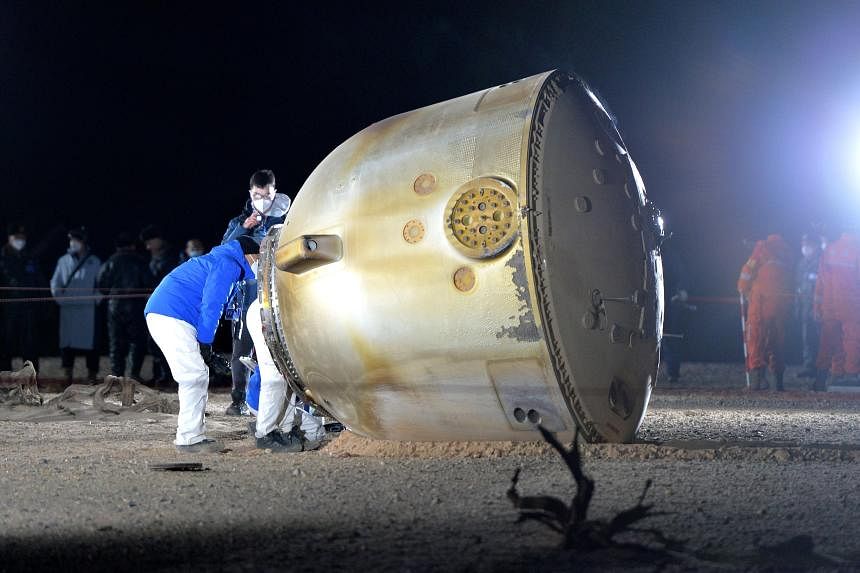The Origins of Fascism and Nazism: the Great Depression
Fascism and Nazism were the products of the Great Depression. The deteriorating economic situation had disastrous effects on the quality of life and well-being of the popular classes and undermined the credibility and legitimacy of democratic systems and governments in the United States and Europe. Fascism in southern Europe and the United States, and Nazism in central and northern Europe and also in the U.S., capitalized on the resulting discontent. These movements acquired significant influence on both sides of the North Atlantic, ultimately governing several countries of Western Europe.
The message of each was authoritarian and antidemocratic. Fascism and Nazism regarded all other political options as illegitimate, the basis for justifying their elimination. Both advocated extreme nationalism based on classism, racism,and machismo, presenting themselves as defenders of the Christian civilization and promoting force and violence against the “other”, whom they defined as an enemy. The two movements were profoundly antiunion, anticommunist, and antisocialist. These views made them attractive to the economic and financial power establishments who felt their power threatened by protests fueled by the labor movements. Hence, influential sectors of these establishments financed Fascism and Nazism.
The Defeat of Fascism and Nazism In World War Ii: The Empowerment of the Popular Classes
Fascism and Nazism were militarily defeated in World War II, a goal achieved through the broad alliance of political and social forces. The defeat of those political options and the weakening of economic and financial powers that supported them allowed for a redefinition of power relations between social classes, particularly between the owners and managers of capital on one side and the working classes on the other. It opened new possibilities, including the empowerment of the working classes that led to the establishment of welfare states and to the reduction of inequalities. Where the working class was stronger, as in Scandinavia, the redistribution of income and ownership of capital was greater and the welfare state more extensive. Where the working class was weaker, as in southern Europe and in the U.S., the redistribution and establishment of the welfare state was practically nonexistent (as happened in Spain, governed by a fascist government, and Portugal, governed by a fascistoid one) or very limited (as in the U.S. where the labor and social rights of the labor force were very reduced) and its class, race, and gender inequalities were very extensive. The structure and modus operandi of its democratic systems have always been clearly structured in favor of conservative political forces. As a consequence, the working class in the U.S. has been historically very weak. Federal law, namely the 1947 Taft-Hartley Act, restricts the activities and power of labor unions, limiting them to defend segmented and highly decentralized sectors of the labor force. General strikes are prohibited. The federal electoral system in the U.S. is hardly proportional or representative, with each state, regardless of population, represented equally by two senators, which inherently biases the legislative chamber, the Senate, in favor of the country’s rural and more conservative regions. Financing of the electoral process is fundamentally private, which enables the financial and economic establishments to “buy” politicians. It is the “liberal economic and political model” par excellence.
The Response of the Social Class of Owners and Managers Of Economic and Financial Capital to the Empowerment of the Popular Classes
The defeat of fascism and Nazism redefined power relations, empowering the working classes. A consequence was an increase in labor’s share of national income, with a proportional decrease in capital income during the post-World War II period through the decade of the 1970s. This led to protests by the economic and financial establishments and the advent of neoliberalism. Established in the U.S. with the election of President Ronald Reagan and in Great Britain with Margaret Thatcher, it was incorporated later in most governing social democratic parties—the majority parties within the European left—through the so-called Third Way.
This new version of liberalism promoted globalization of economic and financial activity with complete freedom of capital and labor mobility, creating a significant increase in migration and displacement of capital, primarily industrial, to the countries of the Global South. Such globalization also resulted in deregulation of the labor market, increased regressive fiscal policies, and the great containment and reduction of public social spending.
These policies aimed to weaken the working class in countries on both sides of the North Atlantic and reverse the distribution of income in favor of owners and managers of capital—at the cost of labor-derived income. The decline of income from labor as a percentage of national income declined significantly from the late 1970s, the end of the period known as the Golden Age of Capitalism, to 2019, before the pandemic started. Between 1978 and 2019, the United States saw a decline in labor-derived income from 70 to 63 percent, Germany from 70 to 62 percent, France from 74 to 66 percent, Italy from 72 to 62 percent, the United Kingdom from 74 to 70 percent, and Spain from 72 to 56 percent. The average decline in labor income among the fifteen countries that would form the European Union (EU 15) was 73 to 64 percent.
This neoliberal response was promoted and led primarily by the U.S. government, (joined later by the European Union whose governments were predominately of conservative and liberal persuasions), and by other U.S.-led organizations such as NATO. NATO expanded its influence in areas of the North Atlantic, including the countries of Eastern Europe and now Ukraine, programming its incorporation into the organization.
During this neoliberal period, as part of the globalization led by the United States, an objective has been the expansion and promotion of the existing neoliberal model. An example of this is the economic and labor policies being put forth by the World Bank and the International Monetary Fund. These policies, which clearly have been influenced by the U.S. and countries of Western Europe, are forcing Ukraine to condition the delay of payment of its foreign debt upon approval of a change in the right to own land in Ukraine. Current law restricts property rights for foreigners. The policy change, however, gives international companies the right to own property in the country. The Ukrainian government, which has a neoliberal orientation, favors these policies which are very unpopular. Equally unpopular is the massive deregulation of the labor market proposed by this government before the war and approved just a few weeks ago. Both measures have been imposed by international organizations and adopted by the Ukrainian government under the assumption that they are necessary to “attract foreign capital to facilitate the reconstruction of the country.” Foreign capital, in this case, means North American and European companies.
The Conversion of the Left-Wing Governments to Neoliberalism and Its Consequences, Even in Countries With Long Progressive Traditions Like Sweden
The neoliberal reforms of the 1980s spread throughout the North Atlantic to the extent that the left-wing governments diluted their resistance to them and ended up making them their own. The greater the strengths of these governments, the longer the delay in the application of such policies. The latest and most notorious case has been Sweden, where progressive forces have historically held power, and where the Social Democratic Party was the longest governing. From 1932 to the late 1970s, the Social Democratic Party ruled Sweden supported on average by 48 percent of the electorate. Things began to change in the 1980s, although not until the 1990s and the beginning of the twenty-first century did neoliberal policies reach their maximum influence. The expansion of fascism was a direct consequence of the application of these policies.
It was predictable that the fascist movement would grow almost exponentially—and also that the detrimental effects of neoliberal policies would affect the electoral behavior of the social classes who would be most negatively impacted by them. I know Sweden, academically and personally, well. I have written extensively about the Swedish welfare state and part of my family is Swedish. And I predicted in my article “What happens in Sweden?,” Publico (June 9, 2013), that the public policies implemented would lead to the situation that exists today. It was precisely in the 1980s when the social democratic government started applying these policies, led by Sweden’s finance minister. These policies were later expanded by the governing alliance of conservative and liberal parties, a body known as the Bourgeoisie Alliance, and later on, continued by the Social Democratic Party who governed again from 2014 until 2022. These neo-liberal policies included the deregulation of the labor market (which allowed employers to pay workers according to their own criteria, whereby employers, including the state, began to hire and pay weaker workers less, that is immigrants); the facilitation of immigration, which increased dramatically; the introduction of privatization in the management of public services, such as health and education, including by private profit-seeking companies; and the deregulation of housing prices.
Most of these policies had a negative effect on the welfare and quality of life of Sweden’s working class with large sections of that class distancing themselves from the social democratic party, and abstained from voting, or voted for the Nazi party, known as the Swedish Democrats. This party presented itself as the “anti-neoliberal establishment,” party, against the establishment political class. It swept the last election.
The Swedish capitalist class favored these neoliberal policies, even though some sectors of that class, close to the social democratic party, were uncomfortable with the Nazi party’s language and values. The vast majority of the media, controlled by economic groups belonging to such a class, did everything possible to destroy the parties to the left of the social democratic party to prevent them from channeling the anti-neoliberal-establishment anger in the popular classes. This is how the Nazi party grew. Everything that happened was totally predictable.
The Growth of Fascism in Western Europe was Predictable: Sweden Was a Clear Example of This
In the elections that took place in Sweden a few months ago, the progressive alliance—the Social Democratic Party, the Left Party, and the Green Party—won 163 seats in Parliament. That was just three votes fewer than the 166 won by the combined right-wing Conservative, Liberal, and Nazi parties. The Nazi party, founded in 1968 as heir to the Swedish Nazi Party, won 20 percent of the vote, becoming the second force in the Swedish Parliament. The majority, the Social Democratic Party, received the most votes, with 30.3 percent. The Nazi party attracted large numbers of voters from the other right-wing parties but also from sections of the working class, who voted previously for the Social Democratic Party. Support for the Nazi party has grown even among members of the union closest to the Social Democratic Party, the LO. Half of them, mostly men, supported the Nazi party. Across the board in this year’s elections, 60 percent of Swedish men voted for right-wing parties.
The causes of these vote transfers are easy to see: the neoliberal policies initiated by the Social Democratic Party and expanded by the liberal-conservative alliance that ruled Sweden for six years. This alliance was later replaced by the Social Democratic Party, which has been governing for the last six years. During this time, it maintained those policies while adding such unpopular austerity measures as the reduction of public health and disability insurance. Austerity policies and labor market deregulation were especially important in explaining the antagonism toward immigration, which increased substantially during this time. In 2015 Sweden experienced an immigration crisis when 163,000 immigrants arrived (doubling the number of immigrants in the country), many of them from Syria, Turkey, Iran, and Afghanistan.
All of these measures explain the growth of the Nazi party. In 2011 the party won only 5.7 percent of the votes, with just 8 percent of the population believing that immigration was a problem. Four years later, in 2015, when immigration peaked, the Nazi party obtained the support of 20 percent of the population. The following year, 24 percent of Swedes regarded immigration as the country’s most significant problem. Recently, 44 percent cited immigration as among the biggest problems facing the country. During the last election, the Nazi party campaigned on the premise, among others, that the socialists were “reducing social rights to free up public funds to assist immigrants.” And they adopted this slogan: “Sweden is for Swedes,” meaning that immigrants did not deserve the rights enjoyed by “true” Swedes.
The Experience at the Other Political Pole of the North Atlantic: The Enormous Crisis of the Neoliberal Model of the United States
The growth of fascism in the United States was equally predictable. The Reagan neoliberalism that began in the 1980s was expanding, and President Bill Clinton fully incorporated it into the Democratic Party and his government. While running for office in 1992, Clinton offered relatively progressive proposals, even adopting the establishment of a national health program that had made the left-wing candidacy of Jesse Jackson in the 1988 Democratic Party primaries and would have guaranteed the right of Americans to receive health care. As advisor to Jesse Jackson in 1988, I had worked on that proposal.
Clinton, however, changed after he was elected. In addition to approving the highly unpopular free trade agreement between the United States, Canada, and Mexico, he renounced many of his proposals, including the establishment of a national health program. Later his wife, Hillary Clinton, who served as Secretary of State during President Barack Obama’s administration, promoted the process of globalization with an increase in the mobility of industries to what is called the Global South.
The consequences of this neoliberal globalization were devastating for the working class in the industrial sectors. There are thousands of examples: For many years in Baltimore (where Johns Hopkins University, where I have been teaching for more than half-a-century, is located), the steel industry was one of the city’s most important sources of employment. The largest steel company left the city, and the neighborhoods of the steel workers (mostly white, blue-collar, and well paid) changed dramatically and are now desolate. Mortality in such areas has significantly increased due to disease of despair (suicide and drug addictions). The overwhelming majority of residents in these neighborhoods voted for Trump.
Today the neoliberal political and media establishments are deeply discredited among the popular classes, especially among the working class—and especially among Whites, who mostly abstain from voting. This situation is responsible for the growth of the ultraright that preceded Trump, and which he has used in a very astute way by presenting himself as an “anti-neoliberal establishment”. In another article I explained that such a movement has the characteristics of the fascist movement of southern Europe, a reality that I know well because I experienced that fascism firsthand in my youth. I had to leave Spain because I was a member of the anti-fascist underground in the 1960s. And the Spanish ultraright now, successors of the fascist party in the sixties, has an ideology very similar to Trumpism with whom they have a close relationship. Trumpism has many characteristics and ideological positions similar to the Spanish and many other European rightwing movements that present themselves as the defenders of the homeland and Christian civilization. Its leading ideologue is Steve Bannon, who is trying to structure a new international ultraright that includes Putin, Giorgia Meloni, Le Pen, Bolsonaro, and many others.
Putin merits special mention in this paper because his government is presented by many conservative forces as a communist government, successor of the Soviet Union governments. Putin had been the right-hand man of Yeltsin, who was supported by Presidents Bush and Clinton of the U.S. in his complete dismantling of the Soviet Union and the economic and social system promoted by that regime. Yeltsin and Putin privatized most of the means of production (except energy) responsible for the greatest increase in mortality in the Russian population since World War II. Russia today is a capitalist economy run by a highly corrupted dictatorship, with a nationalistic profoundly conservative ideology, result of the alliance of the Russian state with the Christian Orthodox church. And the Putin government clearly sympathizes with the international right-wing movements, including the Trumpism in the U.S. (see my article, “Nazism and Fascism in the 30s, Trumpism and predictably Putinism now”, Publico, (April,14, 2022))
Is Trumpism a Fascist Movement?
The Republican party establishment has been losing its mobilizing capacity and being replaced by Trumpism, which is characterized by a discourse aimed mainly at the popular classes. It uses a workerist discourse (explicitly referring to the working people as his people), which presents the Washington-based political-media liberal establishment as the enemy. Today that movement includes most of the electoral base of the Republican party and the largest part of the party’s leadership, which has won a majority of the House of Representatives in the Congressional mid-term elections of the 8th of November which would enable them to control the parliamentary leadership of that party, empowering it to weaken the Biden government, with a possibility of regaining the presidency of the United States in 2024. This would have devastating consequences not only for the United States but also for the world, a reality seemingly ignored by the European Union political establishment.
The Democratic party—the apparatus of which is controlled primarily by Clintonians, whose major influence is on foreign policy—is led by Joe Biden. Pressured by the left, under leadership of Senator Bernie Sanders, he cunningly presented himself as an heir to former president Franklin D. Roosevelt, favoring a New Deal with progressive elements. Since he assumed office, however, Biden’s progressive agenda has been boycotted or eliminated due to internal resistance within the party and pressure from economic interests and business and corporate lobbies.
This situation has disappointed large sectors of the Democratic electorate. The extremist measures of Trumpism, such as the Supreme Court (controlled by such a movement) decision in June 2022 to overturn Roe v. Wade (1973), which guaranteed a constitutional right to abortion, has mobilized resistance. Other Supreme Court decisions have also mobilized the electoral base of the Democratic party to stop Trumpism. The primary reason for mobilizing the electorate of the Democratic Party in the United States, however, is to stop Trumpism rather than to support Biden’s policies which have created considerable disappointment. President Biden’s popularity is very low, and most of the American population is dissatisfied with the current economic situation of the country that the majority of the population attributes to Biden’s policies.
One last note on the U.S.: The political and media establishments of the European Union are apparently not fully aware of the fascist character of Trumpism, as they consider this label to be an exaggeration. An anecdote, however, reflects why their reluctance is a mistake. On January 6, 2021, Donald Trump attempted to mobilize U.S. Army generals to stage a military coup to obstruct the peaceful transfer of power after he lost the election. This story was well documented by Susan B. Glasser and Peter Baker in the New Yorker (August 8, 2022) and referenced in the New York Times (September 8, 2022). That the military establishment refused to comply with or act on his orders frustrated and angered Trump, who announced that he wanted loyal generals, as Hitler had had. In a private conversation, an aide reminded the president that some German generals had tried to assassinate Hitler and almost succeeded, a fact that Trump angrily denied. He insisted that Hitler’s generals had been faithful and that he expected the same from his own brass.
Trump made this clear to General Mark A. Milley prior to naming him chair of the Joint Chiefs of Staff. Milley promised that he would do anything the president asked. But he did not expect what Trump would ask of him or that he would learn the limits of his loyalty. It was at a Black Lives Matter protest in Washington, D.C., in June 2020. President Trump proposed that the general instruct the troops—who had been deployed to thwart the protests—to fire directly at the crowd. Milley chose not to give the order. It was not the first time the general was uncomfortable with a request from Trump, but this time he was tempted to resign. Milley wrote a letter to the president. While he never sent the letter, it was published in the articles mentioned above. In it Milley accused Trump of holding values typical of fascism and Nazism. Referencing World War II, which he called a war against fascism and Nazism, the general wrote: “It is evident to me now that you do not understand the meaning of that war. You do not understand what that war meant. In fact, you subscribe to many of the principles that we fought against. I cannot be part of this project.”
How to Counter the Impact of Neoliberal Policies on Democracy and Popular Classes
Although this article has focused on the growth of fascism and Nazism on two poles of the political spectrum of the North Atlantic, Sweden and the United States – two countries I know well – a similar experience has occurred in many other countries responding to the same causes—the application of neoliberal policies by their governments—with similar consequences: the dramatic decline of the quality of life and well-being of the popular classes, exacerbated by the COVID-19 pandemic. As a consequence, today we are seeing a general discontent with the liberal democratic system, which faces a profound crisis of legitimization on both sides of the North Atlantic. If things do not change, the situation will get worse. A growing number of protests are being channeled by these ultra-right-wing parties that present themselves as the anti-establishment.
The only way to respond to this threat to democratic systems and defend the popular classes, which represent the majority of the population in any country, is for progressive parties everywhere to renew their commitment to a profound transformation of their respective societies. There is a need to reverse the concentration of economic, financial, media, and political power that has been occurring since the 1980s with the application of the so-called neoliberal revolution in most countries on both sides of the North Atlantic. We are witnessing the effects of that revolution. For that reversal to happen, there will need to be a popular pressure to democratize state institutions and diversify the major means of information and communication, which are highly controlled in the current times. And at the international level, it is imperative to change and oppose this neoliberal globalization and the wars it has generated that threaten the very survival of humanity. Evidence clearly shows that to stop these suicidal policies, they need to be replaced by solidaristic policies because the current world-wide problems (such as the pandemic, and the extreme climate change, and others) have shown that the well-being of the majority cannot be assured under the current international order, which enriches the few at the cost of misery for the many. To that purpose, there is an urgent need to demystify the dominant neo-liberal ideology, which persists in most intellectual and academic circles in this part of the world, falsifying the realities that surround us, leading us towards the end of humanity.



 A man walks past a company logo at the headquarters of the world’s largest semiconductor maker TSMC in Hsinchu, Taiwan, on January 29, 2021. Photo: AFP / Sam Yeh
A man walks past a company logo at the headquarters of the world’s largest semiconductor maker TSMC in Hsinchu, Taiwan, on January 29, 2021. Photo: AFP / Sam Yeh



